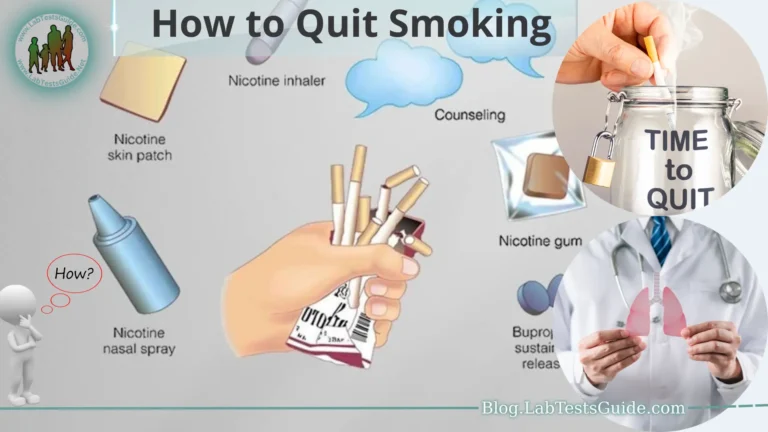Monkeypox is a rare viral disease that poses a significant public health concern due to its potential for outbreaks and zoonotic transmission. The disease is caused by the monkeypox virus, which is closely related to the variola virus responsible for smallpox. While monkeypox cases are relatively infrequent compared to other infectious diseases, it can have serious consequences for those infected, leading to symptoms ranging from a mild rash to severe illness and even death. Understanding the risks associated with monkeypox and adopting preventive measures are crucial in safeguarding individuals and communities from its spread.

Monkeypox primarily spreads from animals to humans, and occasionally between humans, making it essential to recognize and control potential sources of transmission. In recent years, several countries have reported sporadic monkeypox outbreaks, highlighting the importance of preparedness and response to contain its spread effectively. This guide aims to equip readers with essential knowledge on monkeypox, its symptoms, modes of transmission, and most importantly, effective measures to protect oneself and others from contracting the disease. By following the guidelines outlined in this document and working in tandem with health authorities, individuals can play a pivotal role in minimizing the risk of monkeypox outbreaks and preserving the health and well-being of their communities.
What is Monkeypox?
- Monkeypox is a rare viral disease caused by the monkeypox virus, a member of the Orthopoxvirus family, closely related to smallpox.
- The disease was first identified in 1958 when outbreaks occurred in laboratory monkeys, hence the name “monkeypox.”
- Monkeypox is zoonotic, meaning it can be transmitted from animals to humans, and sometimes from person to person.
- The primary animal reservoirs for monkeypox are rodents and other small mammals, with humans being incidental hosts.
- The virus is most commonly transmitted to humans through contact with infected animals or their body fluids, like blood, respiratory droplets, or skin lesions.
- Monkeypox is characterized by a wide range of symptoms, including fever, headache, muscle aches, backache, swollen lymph nodes, and a rash.
- The rash typically starts on the face and then spreads to other parts of the body, often becoming pustular or vesicular.
- Most cases of monkeypox are mild, but severe cases can occur, leading to complications and potential fatalities.
- Vaccination against smallpox can provide some immunity against monkeypox but is not routinely given due to smallpox eradication.
- There is no specific treatment for monkeypox, and medical care focuses on managing symptoms and preventing complications.
How to Recognize Monkeypox Symptoms:
Here are the key points on how to recognize monkeypox symptoms.
- Initial Symptoms: Monkeypox typically starts with flu-like symptoms, such as fever, chills, headache, muscle aches, and fatigue. These symptoms are similar to many other viral infections, making it essential to consider potential exposure to the virus.
- Rash Development: Within a few days after the initial symptoms, a rash will begin to appear. The rash often starts on the face and then spreads to other parts of the body. It can be maculopapular (flat and raised red spots), vesicular (fluid-filled blisters), or pustular (filled with pus).
- Distribution of Rash: Unlike smallpox, which tends to have a more uniform distribution of rash, the monkeypox rash can be widespread and irregular in its distribution.
- Different Stages of Rash: The rash may go through different stages, including macules, papules, vesicles, pustules, and scabs. This progression is essential for distinguishing it from other similar skin conditions.
- Lymph Node Enlargement: Along with the rash, you may notice swollen and tender lymph nodes (lymphadenopathy) in the affected areas.
- Lesions in Mucous Membranes: In severe cases, the rash may involve the mucous membranes, such as the mouth, nose, and genital area, leading to painful and ulcerative lesions.
- Clinical Differentiation: It is important to differentiate monkeypox from other diseases with similar symptoms, such as chickenpox, smallpox, and certain other viral infections.
- Potential Complications: Severe cases of monkeypox can lead to complications, including pneumonia, encephalitis (inflammation of the brain), and eye-related issues.
- History of Exposure: If you have been in contact with animals known to carry monkeypox or have traveled to regions experiencing monkeypox outbreaks, inform healthcare professionals about your potential exposure.
Prevention Measures:
- Vaccination: If you live in or plan to travel to areas with a known history of monkeypox outbreaks, check with healthcare providers about the availability of smallpox vaccination. Although smallpox vaccination is no longer given routinely, it may provide partial protection against monkeypox.
- Personal Hygiene: Practicing good personal hygiene can significantly reduce the risk of infection. Wash your hands frequently with soap and water for at least 20 seconds, especially after contact with animals, animal products, or potentially contaminated surfaces.
- Avoid Touching Your Face: Avoid touching your eyes, nose, and mouth with unwashed hands, as this can facilitate the entry of the virus into your body.
- Avoiding Contact with Infected Animals: Refrain from direct contact with wild animals, particularly rodents and other small mammals, as they can be carriers of the monkeypox virus. If you come across sick or dead animals, avoid handling them and report the findings to local health authorities.
- Travel Precautions: If traveling to areas with known monkeypox outbreaks, take precautions to avoid contact with animals, especially in markets and farms. Additionally, stay informed about any health advisories issued by the destination country or the World Health Organization (WHO).
- Quarantine and Isolation Measures: If you suspect that you might have been exposed to monkeypox or develop symptoms, self-isolate immediately, and seek medical attention. This will help prevent potential spread to others.
- Protective Clothing: When handling animals or potentially infected material, wear appropriate protective clothing, such as gloves, masks, and long-sleeved clothing, to minimize the risk of contact with the virus.
- Outbreak Preparedness and Response: Stay informed about monkeypox outbreaks in your area and follow guidance provided by local health authorities. Be aware of symptoms, risk factors, and the steps to take if you suspect infection.
- Promote Public Health Awareness: Educate others in your community about monkeypox, its symptoms, and preventive measures. Encourage people to report any suspected cases promptly to health authorities.
- Cooperation with Health Authorities: Cooperate with health authorities during an outbreak, which may include participation in contact tracing and following isolation or quarantine guidelines.
Dealing with Potential Exposure:
Here are the key steps to take if you suspect you have been exposed to monkeypox.
- Recognize Potential Exposure: Be aware of potential sources of monkeypox transmission, such as contact with infected animals or their body fluids, exposure to sick individuals, or traveling to regions with reported monkeypox cases.
- Monitor for Symptoms: After a potential exposure, monitor yourself closely for any signs of monkeypox symptoms. These may include fever, headache, muscle aches, and the development of a rash, which typically starts on the face and spreads to other parts of the body.
- Self-Isolate: If you suspect exposure or begin experiencing symptoms, self-isolate immediately to avoid potentially spreading the virus to others. Limit contact with family members and avoid close interactions with others until you can seek medical advice.
- Seek Medical Attention: If you develop symptoms or suspect exposure to monkeypox, contact your healthcare provider or local health department promptly. Inform them about your potential exposure history and any symptoms you are experiencing.
- Follow Health Guidelines: Follow any instructions provided by healthcare professionals or health authorities. This may include arrangements for testing, quarantine, or isolation to prevent further transmission.
- Contact Tracing: If you have been in close contact with individuals confirmed or suspected to have monkeypox, cooperate with health authorities in contact tracing efforts. Provide relevant information to assist in identifying and notifying others who may be at risk.
- Inform Travel History: If you have traveled to regions with monkeypox outbreaks, inform healthcare providers about your travel history. This information is crucial for early detection and appropriate management.
- Avoiding Direct Contact: Until the possibility of monkeypox is ruled out, avoid direct contact with vulnerable individuals, such as the elderly, young children, pregnant women, and individuals with weakened immune systems.
- Practice Respiratory Etiquette: Cover your mouth and nose with a tissue or your elbow when sneezing or coughing. Dispose of used tissues properly and wash your hands immediately afterward.
- Stay Informed: Stay updated with the latest information on monkeypox from reputable health sources, such as the World Health Organization (WHO) or the Centers for Disease Control and Prevention (CDC).
Outbreak Preparedness and Response:
Here are the key aspects of outbreak preparedness and response.
- Surveillance and Monitoring: Establish robust surveillance systems to detect potential monkeypox cases early. Monitor and track cases, including suspected, confirmed, and probable ones, to assess the extent of the outbreak and identify high-risk areas.
- Rapid Diagnosis: Strengthen laboratory capacity to quickly diagnose monkeypox cases. Access to reliable diagnostic tests helps confirm infections promptly, enabling timely intervention.
- Healthcare Provider Training: Educate healthcare providers about monkeypox symptoms, risk factors, and case management. This ensures that suspected cases are recognized, reported, and appropriately handled.
- Isolation and Quarantine Facilities: Set up isolation and quarantine facilities to separate confirmed or suspected monkeypox cases from the general population. This helps prevent further transmission of the virus.
- Contact Tracing: Conduct thorough contact tracing to identify individuals who may have been exposed to monkeypox patients. Promptly notify and monitor contacts to detect potential cases early.
- Public Awareness Campaigns: Launch public awareness campaigns to educate communities about monkeypox, its symptoms, and preventive measures. Encourage people to report suspected cases to health authorities.
- Infection Prevention and Control: Implement stringent infection prevention and control measures in healthcare settings and places with a high risk of transmission. This includes proper hand hygiene, use of personal protective equipment (PPE), and disinfection protocols.
- Coordination and Communication: Establish effective communication and coordination channels among local, regional, and national health authorities. Collaborate with international health organizations for global monitoring and response efforts.
- Vaccination Strategies: Consider vaccination strategies, such as offering smallpox vaccination to specific high-risk groups, especially in areas with confirmed monkeypox cases.
- Travel Restrictions and Guidelines: Implement travel restrictions and guidelines to minimize the spread of monkeypox across regions. This may include screening travelers for symptoms and providing health information at border points.
- Research and Development: Support ongoing research on monkeypox to enhance understanding of the virus, develop new diagnostic tools, and explore potential treatments and vaccines.
FAQs:
What is monkeypox, and how is it transmitted?
Monkeypox is a rare viral disease caused by the monkeypox virus. It is primarily transmitted to humans from animals, particularly rodents and other small mammals. Human-to-human transmission can also occur through respiratory droplets, direct contact with bodily fluids, or contaminated materials.
What are the symptoms of monkeypox?
Monkeypox symptoms initially resemble flu-like symptoms, such as fever, headache, muscle aches, and fatigue. Within a few days, a rash develops, starting on the face and spreading to other parts of the body. The rash can be maculopapular, vesicular, or pustular.
How is monkeypox diagnosed?
Monkeypox can be diagnosed through laboratory tests, including polymerase chain reaction (PCR) tests and virus isolation. Clinical presentation, travel history, and exposure to potentially infected animals are also considered.
Is there a vaccine for monkeypox?
There is no specific vaccine for monkeypox, but vaccination against smallpox can provide some protection. Smallpox vaccination is not routinely given, as smallpox has been eradicated, but it may be offered to specific high-risk groups during monkeypox outbreaks.
What is the treatment for monkeypox?
There is no specific antiviral treatment for monkeypox. Medical care focuses on managing symptoms, providing supportive care, and preventing complications. Severe cases may require hospitalization.
How can I protect myself from monkeypox?
To protect yourself from monkeypox, practice good personal hygiene, wash hands frequently, avoid contact with wild animals and potentially infected animals, and be cautious while traveling to regions with reported monkeypox cases.
Can monkeypox be fatal?
Yes, monkeypox can be fatal, especially in severe cases or in individuals with weakened immune systems. However, most cases are mild to moderate, and fatalities are relatively rare.
Is monkeypox more dangerous than smallpox or other viral diseases?
Monkeypox is generally less severe than smallpox, which had a much higher mortality rate. However, monkeypox can cause serious illness and complications, making it a public health concern.
Can monkeypox be transmitted through vaccination against smallpox?
Vaccination against smallpox does not transmit monkeypox. The vaccine uses a related but different virus and does not contain live monkeypox virus.
What should I do if I suspect I have monkeypox?
If you suspect you have monkeypox or have been exposed to the virus, seek medical attention immediately. Isolate yourself from others to prevent potential transmission until you receive guidance from healthcare professionals.
Conclusion:
In conclusion, monkeypox is a rare but significant viral disease that can pose public health challenges due to its potential for outbreaks and zoonotic transmission. Early recognition of symptoms, understanding transmission risks, and adopting preventive measures are vital in protecting individuals and communities from this infectious disease. Outbreak preparedness and response strategies, including robust surveillance, rapid diagnosis, and effective communication, play a crucial role in containing the spread of monkeypox and minimizing its impact. By staying informed, cooperating with healthcare authorities, and promoting public awareness, we can collectively contribute to mitigating the risks associated with monkeypox and safeguarding global health.






